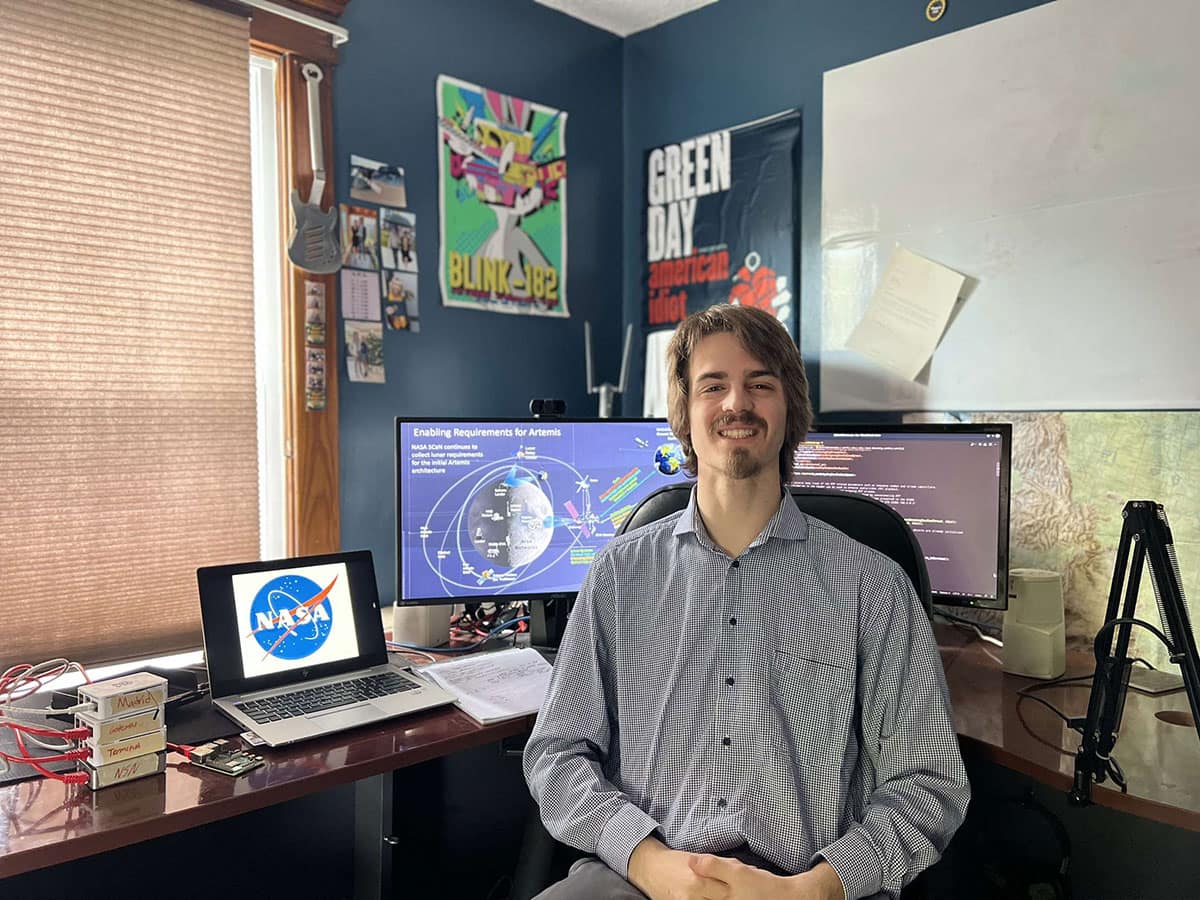Embry-Riddle Ph.D. Student Brings Top-Notch Experience to Space Research

When Kyle Vernyi started his doctoral program at Embry-Riddle Aeronautical University this past fall, he had already completed two exciting internships at NASA’s Glenn Research Center (GRC), where he worked closely with one of his undergraduate professors, who is also a NASA engineer, from The University of Akron.
“The projects and labs at NASA GRC span the whole engineering gamut,” said Vernyi. “Getting to tour those places and meet the engineers, mathematicians, pilots and technicians was fantastic.”
For his Ph.D., Vernyi chose Embry-Riddle, he said, because of its emphasis on aerospace.
“Other big-name engineering schools also have strong programs in aerospace, but at Embry-Riddle, you are totally immersed in the aerospace world, which is a unique experience,” he said, adding that the university’s aerospace controls faculty also attracted him. “The controls faculty are good people and are working on interesting projects. Given all this, it was an easy decision.”
“Also, the beach doesn’t hurt,” the Northeast Ohio native said.
Working in the Foundational Autonomous Systems and Technologies (FAST) lab with Dr. Merve Dogan, assistant professor in Embry-Riddle’s Department of Aerospace Engineering, has been “an amazing experience,” Vernyi added.
“I have learned more in a single semester of graduate school than I ever thought possible,” he said. “My classwork has directly applied to my research on robotic manipulator control, and my research has likewise strengthened my understanding of the academic topics. The professors are fantastic, and I look forward to every lecture.”
From Dogan's perspective, Vernyi demonstrates huge talent and potential.
"Kyle brings an unparalleled level of dedication, technical expertise and innovative thinking to the FAST lab. His experience at NASA's Glenn Research Center, coupled with his exceptional contributions to our research on experimental testbed development and control of space vehicles with robotic arms, underscores his ability to seamlessly integrate theoretical excellence with practical innovation," Dogan said. "His commitment to addressing critical challenges in autonomous space systems, aerial systems and robotics is evident in his pioneering efforts, and I am confident that his groundbreaking work will significantly contribute to the advancement of aerospace technology."
The project Vernyi worked on during his two Space Communications and Navigation (SCaN) internships at NASA — as part of the High-Rate Delay Tolerant Networking (HDTN) team — aimed to create a satellite network that would speed the delivery of information from the surface of the moon back to Earth. As he explains, the footage that was broadcast to the world during the Apollo missions was of poor visual quality. With the Artemis return to the moon, the goal is to stream 4K video “so people can live vicariously through our astronauts,” Vernyi told The University of Akron News in August.
The HDTN project was launched in November on a SpaceX Falcon 9 rocket to the International Space Station, where it will be tested. He and his Akron professor/NASA advisor, Dr. Daniel Raible, have submitted a paper on their work to the 2024 American Institute of Aeronautics and Astronautics (AIAA) SciTech Forum.
Vernyi’s research at Embry-Riddle is focused on control theory, a field that is distinct from but closely related to space communications, he said.
“I really enjoy both, so I am looking to combine them in my research,” Vernyi said. “For example, a multiagent system such as a drone swarm or satellite constellation uses both communication and control theory.”
Looking forward, Vernyi said he is establishing his research and applying for grants.
“Then I will buckle down for a few years and get it done. It is a dream to graduate and work at one of our nation's research laboratories or to contribute to our nation’s defense capabilities.”

 Michaela Jarvis
Michaela Jarvis